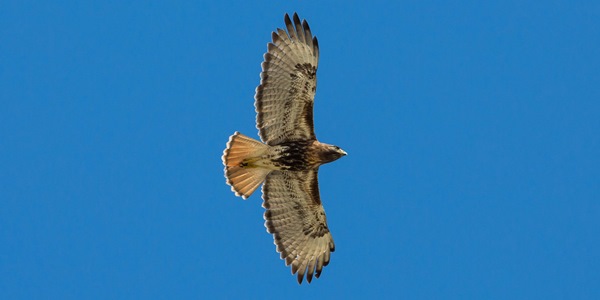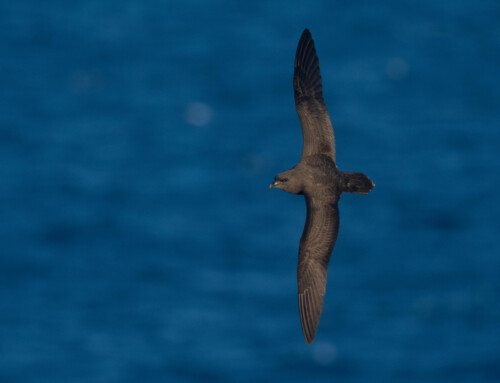LINKED PAPER
A seasonal population matrix model of the Caribbean Red‐tailed Hawk Buteo jamaicensis jamaicensis in eastern Puerto Rico. Gallardo, J.C., Viella, F.J., & Colvin, M.E. 2019. IBIS. DOI: 10.1111/ibi.12703. VIEW
At first glance, islands have the inherent ability to draw in our minds a sense of remoteness and enchantedisolation, a creative playground of natural selection. Despite representing a small fraction of the Earth’s surface (~7%), islands arethe stronghold of a great number of endemic species, making them critical for the conservation of global biodiversity (Myers et al. 2000). Throughout the history of science, island modelsplayed an important role in the development of numerous ideas, including two of the most notorious ones: Darwin and Wallace’s concept of evolution through natural selection and MacArthur and Wilson’s island biogeography theories. The principles fostered by those two theories are still shaping our understanding about evolution, speciation, and area-diversity patterns, and their applications in conservation have been helping us to better design protected areas. Even being the inspiration for revolutionary ideas, islands are still far away from our day-to-day research and are misrepresented in conservation efforts. Just in the last five centuries, more than 75% of the world’s animal extinctions have occurred on islands (Hume 2017). To be more specific, approximately 90% of known extinct species and subspecies of birds have been island endemics; some of those were last seen as recently as the current century (Sodhi et al. 2011).
My fascination with birds started at a young age, and it was nurtured by growing up in a rural town in northeast Mexico. Back then, my tropical birding mornings were fascinating experiences, like a day in an art gallery, because the arrangement of colors, shapes, and behavioral displays of the tropical birds represented, in my eyes, unique pieces of evolutionary art. However, it was not until I landed in Puerto Rico to do my PhD research when the words of Darwin, Wallace, MacArthur and Wilson started crystallizing their meaning in my mind. I was presented with examples of concepts such as niche expansion and ecological release. I saw some of my familiar species from the mainland tropics like the Bananaquit Coereba flaveaola, being the most abundant species in all forest strata at all elevations, and habitat specialist species such as the endemic Elfin Woods Warbler Setophaga angelae, being restricted to only two montane forests. I learned that populations on oceanic islands acquire certain traits (e.g., stable and high densities, small home ranges, reduced dispersion, high adult survival probability, and small vital rates) that allow them to thrive in island environments (Adler and Levins 1994, Gliwicz 1980). However, some of those population traits are linked to a high extinction risk (Purvis et al. 2000).
Figure 1 Representation of stages 1 and 2 of Island Colonization Strategies of the Theory of Island Biogeography
For my PhD research, I was trying to understand the ecology of two raptors, one a scarce habitat specialist, the endangered Puerto Rican Sharp-shinned Hawk Accipiter striatus venator and the other a common and abundant species, the Caribbean Red-tailed Hawk Buteo jamaicencis jamaicensis. The rarity of the Sharp-shinned Hawk highlights a potential explanation that the greatest local abundance of the Red-tailed Hawk is in Puerto Rico, where it reaches the highest density of the species’ range. Most of the evidence suggests that rainfall has an important influence in some birds’ reproductive performance in eastern Puerto Rico, including the Red-tailed Hawk (Snyder et al. 1987, Santana & Temple 1988). However, same stressors (e.g., severe weather events) may have varying effects on different life stages. Identifying the life stages with the greatest influence in the trajectory of a population is a key element for its conservation and management. Similarly, as with other long-lifespan birds, the survival of adult Red-tailed Hawks is the greatest contributor to the species’ population growth (λ) in Puerto Rico. However, the survival of nestlings has the second greatest influence on λ.
Figure 2 The Red-tailed Hawk reaches its highest concentration in eastern Puerto Rico. Here, in the Luquillo Mountains, this hawk breeds at all elevations and types of habitats, from open savannas to dense closed canopy forest © Julio C. Gallardo
By retaining some mainland traits (e.g. clutch size, 2.3 egg/clutch) and traits typical of tropical islands (e.g. high adult annual survival), the Red-tailed Hawk in eastern Puerto Rico can sustain positive population growth, despite low productivity in environments affected by inclement weather (e.g., at long periods of rain and fog at higher elevations). It is known that one of the main limiting factors that affects the small population of the critically endangered Puerto Rican Parrot Amazona vitatta is long periods of rain (e.g., increased nest failure) and direct predation (e.g., by Red-tailed Hawk) (Snyder et al. 1987,White et al. 2005).This scenario made me rethink an alternative explanation to the historical population decline and the current distribution of the Puerto Rican Sharp-shinned Hawk, which was always reported as rare, has a smaller average clutch size than mainland populations, and is restricted to the wet slopes, isolated on mountain tops with high precipitation (Gallardo and Vilella 2017). However, further research is needed to gain a better understanding of the conservation status of this species.
According to chapter four of the Theory of Island Biogeography (The Strategy of Colonization; MacArthur & Wilson 1967),the population of Red-tailed Hawks in eastern Puerto Rico exhibited traits described as typical of species in the first stage of island colonization (e.g, logarithmic population growth driven by high adult survival and reproductive success). Following what was described by MacArthur and Wilson and what I found in my PhD research, changes in early life stages could have a greater impact on population growth in some species at more advanced colonization stages, especially those with more strict ecological requirements, shrinking populations or isolating them to suboptimal habitats (e.g., mountain tops). Understanding how population growth is affected by each life stage could help us to improve conservation and management schemes for of other island endemics, for example the endangered Hawaiian Honeycreepers (Drepaninae).
Nominate this article for a BOU Science Communication Award.
References
Adler, G.H. & Levins, R. 1994. The island syndrome in rodent populations. Q. Rev. Biol. 69: 473-490. VIEW
Gallardo, J.C. & Vilella F.J. 2017. Conservation status assessment of the Sharp-shinned Hawk, and endangered insular raptor in Puerto Rico. J Field Ornithol 88: 349–361. VIEW
Gliwicz, J. 1980. Island populations of rodents: their organization and functioning. Biol. Rev. 55: 109-138. VIEW
Hume, J. 2017. Extinct Bird. Second Edition. London, UK: Bloomsbury Publishing.
MacArthur, R.H. & Wilson, E.O. 1967. The Theory of Island Biogeography. Princeton, NJ: Princeton University Press.
Myers, N., Mittermeier, R.A., Mittermeier, C.G., da Fonseca G.A.B. & Kent J. 2002. Biodiversity hotspots for conservation priorities. Nature 403: 853–858. VIEW
Purvis, A., Gittleman, J.L., Cowlishaw, G., & Mace, G.M. 2000. Predicting extinction risk in declining species. Proceedings of the Royal Society B 267: 1947–1952. VIEW
Santana, E. & Temple, S.A. 1988. Biology and diet of Red-Tailed Hawks in Puerto Rico. Biotropica 20: 151-160. VIEW
Snyder, N.F.R., Wiley, J.W. & Kepler, C.B. 1987. The Parrots of Luquillo: Natural History and Conservation of the Puerto Rican Parrot. Los Angeles, CA: Western Foundation of Vertebrate Zoology.
Sodhi, N.S., Şekercioğlu, C.H., Barlow, J., & Robinson, S.K. 2011. Conservation of Tropical Birds. Oxford, UK: Wiley-Blackwell Press.
White, T.H.Jr., Collazo, J.A, & Vilella, F.J. 2005. Survival of captive-reared Puerto Rican parrots released in the Caribbean National Forest. Condor 107: 424-432. VIEW
Image credits
Featured image: Caribbean Red-tailed Hawk Buteo jamaicensis jamaicensis © Julio C. Gallardo






